Creating A Sensory-Friendly Home for Autistic Children
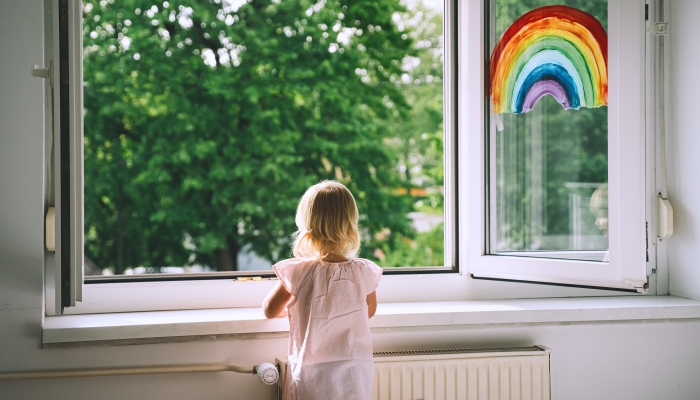
This post may contain affiliate links; please see our terms of use for details.
- Creating a sensory-friendly home helps avoid sensory overload, which is common in children with autism.
- A sensory-friendly space can significantly affect your child’s behavior, leading to positive impacts at home.
- A sensory-friendly home environment includes natural light, warm colors, a calm setting, and reduced sound levels.
- Sensory overload can lead to behavior problems, irritability, stress, restlessness, physical discomfort, and anxiety.
While my home would never make HGTV or win awards, I ensure it’s comfortable for my children. In other words, my house looks like kids live in it.
However, it can be overwhelming for children on the autism spectrum to live in a house that doesn’t flow properly. If your child has a sensory processing disorder, establishing a sensory-friendly house is a great idea, ensuring your child is comfortable.
You can help your child by creating sensory rooms that help deal with the five senses and consider your child’s visual input.
Creating a sensory-friendly home makes a child with sensory sensitivities feel comfortable, calm, and relaxed. A sensory-friendly home benefits the child’s well-being and development and fosters a stronger sense of connection and understanding within the family.
What Is the Best Home Environment for Autistic Children?
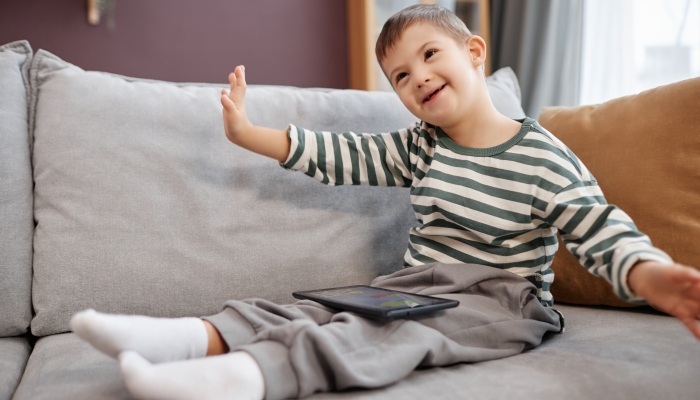
Children with autism spectrum disorder (ASD) frequently have sensory sensitivities and are overwhelmed by loud noises, bright colors, and bright lights. However, making your home autism friendly helps create a safe space where your child feels comfortable and relaxed.
The best home environment for an autistic child is inviting, comfortable, and makes them feel at peace. Autistic people with sensory processing issues do best when they aren’t overstimulated and have a place to move when they need sensory input.
Sensory input refers to the stimuli our five senses perceive, including visual patterns, bright objects, and specific colors or shapes.
Examples of common sensory issues faced by individuals with autism:
- Certain sounds can cause anxiety in children with autism.
- A child with light sensitivity may be bothered by an overhead light, fluorescent lighting, or a table lamp.
- Children with repetitive behaviors need a home that can stand up against curious hands.
- A house with excess noise can be overwhelming for a child on the autism spectrum.
- A lack of safety measures could lead to injuries and accidents around the home.
Examples of sensory-friendly home modifications you can do include:
- Specific corners for activities and meals
- Minimize clutter and arrange furniture to allow pathways
- Neutral color schemes
- Calming background music
- Natural light and avoiding bright lights
- Reduce external sounds
- Create a sensory garden
- Add weighted blankets to your child’s room
- Opt for natural materials and low-odor cleaning supplies and paints
Remember, you don’t have to redecorate your house at once; instead, take your time to determine the environment your child thrives in. You’d be surprised at how far little changes go in the long run.
Guide on How to Create a Sensory-Friendly Home
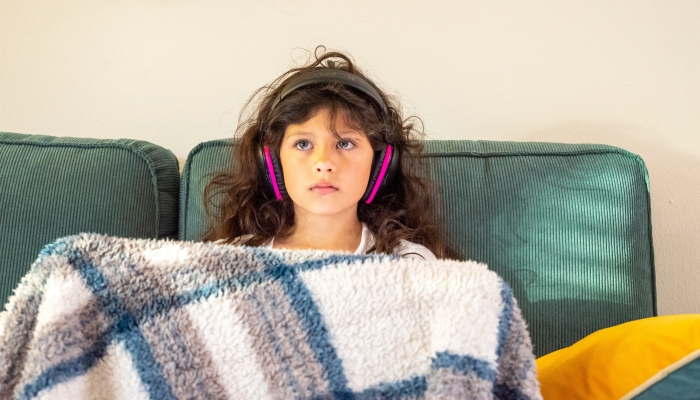
A sensory-friendly home allows a welcoming atmosphere for an autistic family member or visitors. Children with autism don’t always know how to deal with sensory overload, so creating an autism-friendly home can help with any difficulties.
Here are a few tips and sensory tools to get you started:
- It’s best to allow natural lighting in your home and avoid fluorescent lights that are frequently uncomfortable for someone with a sensory processing disorder.
- Loud noises make an autistic child uncomfortable, so noise reduction is highly recommended. For an extra layer of protection, I recommend picking up a pair of noise-canceling headphones or a white noise machine to help block out unwanted noise.
- 14 Soothing Sleep Sound: The White Noise Sound Machine is expertly designed, it includes 6 White noises, 3 lullabies and 5 relaxing nature sounds. Creates a relaxing sleep atmosphere and refined listening experience.
- 10 Levels Warm Night Light: With 10 levels warm night light to create the perfect atmosphere as a sleep aid for kids, adults or babies. Change the environment around you and as a perfect soothing baby sleep assistance, it is ideal for night time feeds.
- 5 Timers and Memory Functions: The portable white noise sound machine can be played continuously at 15, 30, 60, 90, and 120 min intervals with auto-off settings. With a built-in memory function, the sound machine remembers the last sound and volume setting used, for quick and easy set up.
- Privacy and Concentration: The sleep sound machine can also be used for meditation, yoga, or offices. Simply adjust the volume to cover up conversations, making it perfect for office privacy.
- Creating small sensory spaces is also recommended because it allows your child their own space to indulge in sensory-seeking behavior.
- Reduce outdoor noise pollution by closing your windows and blinds while your child is resting or agitated.
- Avoid using strong cleaning products, synthetic materials, and candles because people with autism sometimes have issues with strong odors.
- If your child is bothered by visual stimuli, consider changing your home’s lighting, decor, or organization.
- Create a sensory room where the entire room is dedicated to supporting your child’s sensory sensitivity and eliminating potential hazards.
- Understand whether your child thrives with visual stimulation or requires simple colors and patterns.
It’s a great idea to create a sensory room, allowing your child a free space to explore and play. (You can easily create a sensory room on a budget with items around your house or at the neighborhood dollar store!)
You may also consider creating a sensory-friendly space outside in a garden or other area. Fresh air is great for children and allows for exploration and relaxation.
The National Association for the Education of Young Children (NAEYC) discusses how fresh outside air promotes better sleep, supports STEM skills, and invites new contexts for learning11. Kinsner, K.. Rocking and Rolling. Fresh Air, Fun, and Exploration: Why Outdoor Play Is Essential for Healthy Development. NAEYC. 2019. https://www.naeyc.org/resources/pubs/yc/may2019/outdoor-play-is-essential.
Two important things to remember when creating a sensory-friendly home are limiting regular external and internal sounds. Individuals with autism frequently have sensory sensitivities to loud noises.
Examples of regular external sounds include:
- Children playing outside
- Construction in the neighborhood
- Traffic
- Highways
- Neighbors
Examples of regular internal sounds include:
- Clocks ticking
- Refrigerators making noise
- Loud audio equipment
- Smoke detectors
While you can’t eliminate some noises, you can provide a space that allows your child to be further away from sounds they don’t tolerate well.
What Makes a Home Sensory-Friendly?
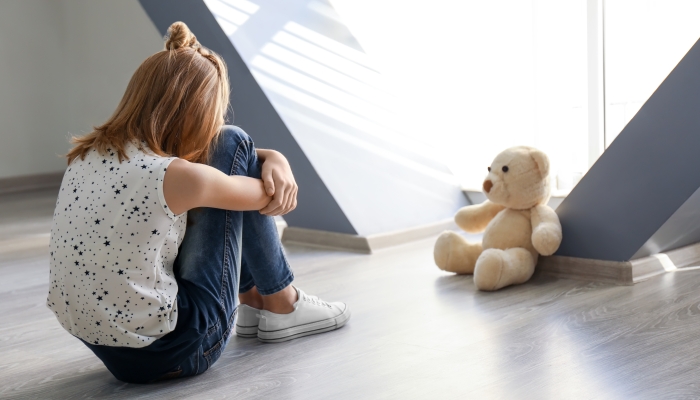
The idea of transforming your home into a sensory-friendly space may seem overwhelming, but it’s easier than you think. You don’t have to buy various items to encourage a safe space for your child.
For example, it’s a great idea to allow natural light to enter the house, including the dining area, kitchen, and living room. A 2022 case study published in Front Psychiatry22. Nair, A. S., Priya, R. S., Rajagopal, P., Pradeepa, C., Senthil, R., Dhanalakshmi, S., Lai, K. W., Wu, X., & Zuo, X.. A case study on the effect of light and colors in the built environment on Autistic Children’s behavior. Frontiers in Psychiatry. 2022;13. https://doi.org/10.3389/fpsyt.2022.1042641 found that autistic children are prone to light sensitivity, which can lead to behavioral changes.
The study also found that neutral tones and mellow shades proved autistic-friendly due to their calming and soothing effect.
Examples of aspects that make a home sensory-friendly include:
- Warm neutrals
- Soft furnishings
- Proper ventilation with certified HEPA filters
- Access to fresh air
- A designated sensory room
- Acoustics to reduce unwanted noise
- Clear pathways with appropriate furniture arrangement
- Tactile elements like sensory toys and textured wall coverings
You also want space for proprioceptive input, which assists your child in responding to sensory stimuli. In addition, proprioceptive input helps with coordination, self-regulation, the ability to focus, and speech.
Adding proprioceptive input toys and activities to your home is a great idea, including yoga, balance exercises, sensory activities, and obstacle courses.
Benefits of a Sensory-Friendly Home for Children With Sensory Sensitivity
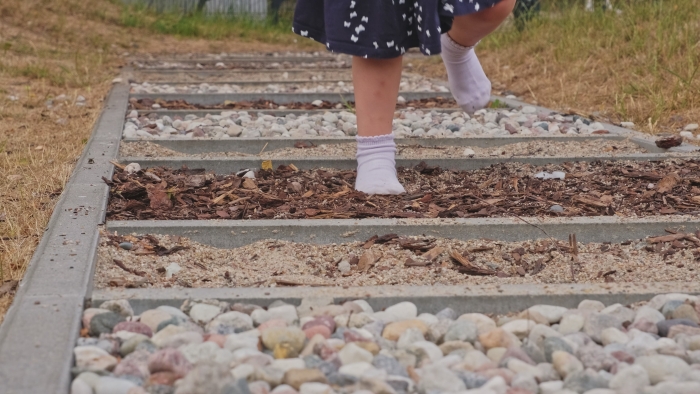
Making sensory-friendly changes to your home can significantly benefit your child with sensory sensitivity. While nothing is perfect, we hope the following benefits encourage you to create a warm, safe place for your child.
Reduces Anxiety and Stress
A child with a sensory processing disorder will likely see a reduction in their overall anxiety and stress levels in a sensory-friendly home. For example, children will likely not be overwhelmed by sensory stimuli that may trigger negative reactions.
Improves Focus
A sensory-friendly home helps improve focus in children with sensory sensitivity by minimizing distractions and sensory triggers. In addition, the environment lends itself to concentrating on tasks, daily routines, and learning.
Provides a Safe Environment
When children feel safe at home, they are more likely to be relaxed and calm. A sensory-friendly home helps reduce potential hazards for a child with sensory sensitivity, especially if they have difficulty with spatial awareness.
Encourages Independence
Setting up a sensory room encourages your child to be independent in a safe place. You’ll also notice by establishing clearly defined routines and spaces that your child will have an easier time navigating their home environment.
Establishes Better Sleep Patterns
When a child is relaxed at home, they are likely to sleep better at night. To help, you can provide your child with comfortable bedding and ensure their room is quiet with dim lighting, which can help improve sleep quality. If you need more help with sleep, check out our 9 tips for sleep training kids with autism.
Reduces Sensory Overload
Creating a sensory-friendly home helps reduce triggers leading to sensory overload while establishing a calming and soothing environment. Reducing sounds in the home can also help with sensory overload.
Allows Personal Space
When you create personal space for your child, you give them an area specifically for them that no one else is allowed in. It’s a great idea to add their favorite decorations, toys, or artwork to add an extra level of comfort.
FAQs
How can I involve my child with sensory processing disorder in designing and adapting our home to their sensory needs?
Understanding what sensory experiences your child prefers can significantly impact adapting to your home. You’ll likely better understand their preferences as you explore their different feelings and venture into autistic home decorating.
What are some strategies for maintaining a sensory-friendly environment when hosting guests or accommodating other family members’ needs?
You should never feel obligated to rearrange your home for a visitor. However, creating a sensory room or designated area for your child helps establish a safe and calm place for them to go when guests come over.
How can I gradually introduce sensory-friendly elements and changes to my home without overwhelming my child with autism spectrum disorder?
Autistic people don’t always handle change well, so making small changes that add up, in the long run, is essential. Creating an autism-friendly environment is important, but so is ensuring your child has time to process the changes.
Should I seek professional advice or consultation when creating a sensory-friendly home? If so, who should I approach?
An occupational therapist is an excellent resource if you need additional advice. In addition, the Autism Society is also a great resource if you want to learn more about autism33. Autism society creating connections for the autism community to live fully. Autism Society. https://autismsociety.org and how to better understand typical behaviors and characteristics, which can help create a sensory-friendly home. The autism community is a fantastic resource for the parents of an autistic person looking for support.
References
- Kinsner, K. (2019, May). Rocking and Rolling. Fresh Air, Fun, and Exploration: Why Outdoor Play Is Essential for Healthy Development. NAEYC. https://www.naeyc.org/resources/pubs/yc/may2019/outdoor-play-is-essential
- Nair, A. S., Priya, R. S., Rajagopal, P., Pradeepa, C., Senthil, R., Dhanalakshmi, S., Lai, K. W., Wu, X., & Zuo, X. (2022). A case study on the effect of light and colors in the built environment on Autistic Children’s behavior. Frontiers in Psychiatry, 13. https://doi.org/10.3389/fpsyt.2022.1042641
- Autism society creating connections for the autism community to live fully. Autism Society. (n.d.). https://autismsociety.org
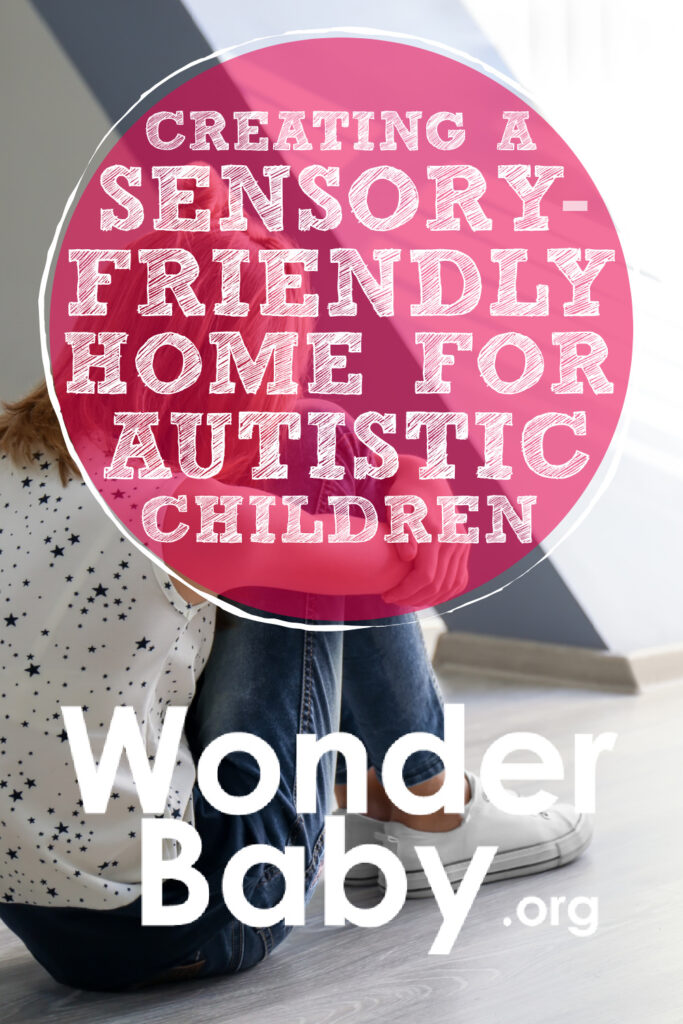
Related Posts
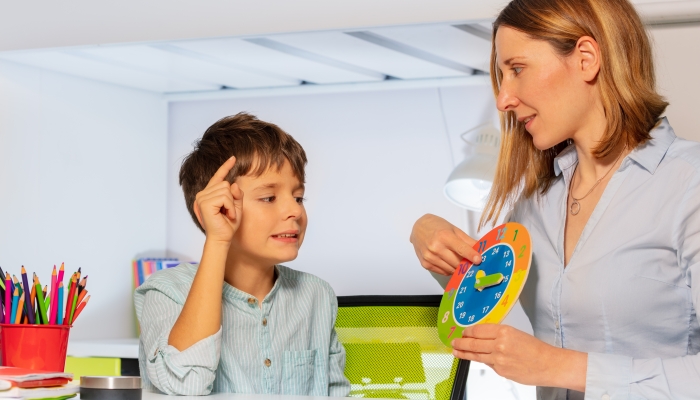
Autism
Developing Time Management Skills in Children with Autism: 7 Tips
Learn how you can use structure and visual aids to help your child with autism learn time management skills.

Autism
Occupational Therapy for Children with Autism: How It Can Make a Difference
Children with autism face challenges in many different areas. Occupational therapy can help children address these difficulties while having fun!
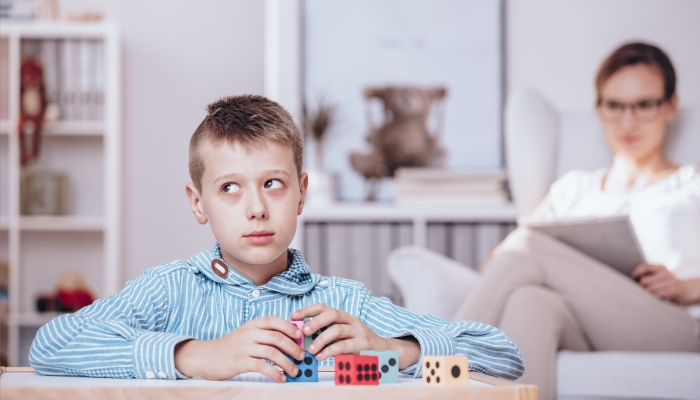
Autism, Behavior
OCD vs Autism in Children: How To Tell the Difference
OCD and ASD are fundamentally different, but their symptoms are very similar. Learn how to tell the difference to support your child.
